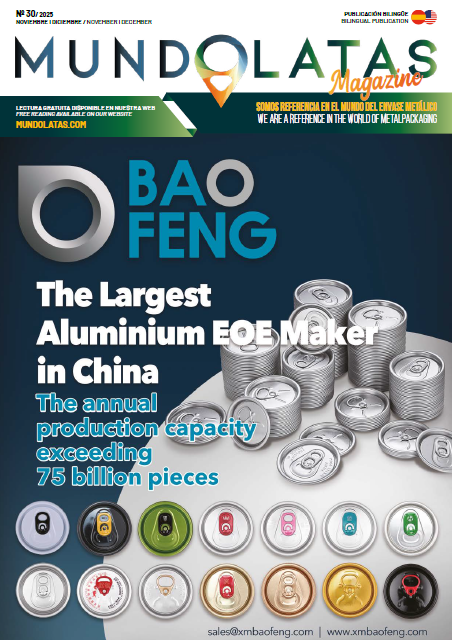New EU strategy for the management of packaging and packaging waste
May marks the arrival of the new European Packaging and Packaging Waste Regulation, which amends Regulation (EU) 2019/1020 and Directive (EU) 2019/904, and replaces Directive 94/62/EC. This rule will be applicable in all Member States and will enter into force twenty days after its publication in the Official Journal of the European Union.
The Spanish Government will have to revise Royal Decree 1055/2022 on Packaging and Waste, which is good news as it seeks to have a unified and ambitious regulation at European level. This royal decree is based on the new Circular Economy Plan and fulfills the commitment to strengthen the requirements for packaging to be reusable and recyclable, covering its complete cycle from its design to its management as waste. Measures are established to prevent the creation of waste and reduce the excessive use of packaging by 5% by 2030, 10% by 2035 and 15% by 2040.
By 2030, 10% of packaged products must be reusable
Catering and food suppliers will have to offer customers the option of bringing their own container to be filled with ready-made beverages and food.
As Europe’s main objective is to encourage reuse, the new measures will mainly affect disposable packaging, used for packaged food and beverages consumed in the on-trade, as well as individual packaging. From January 1, 2030, small packages and samples, such as mini bottles of shampoo or creams offered to customers in hotels and establishments, will also be banned.
It has been determined that the use of transport packaging, including those used in e-commerce, reuse targets will be established. Economic suppliers will be required to ensure that at least 40% of these containers can be reused within a specific system. As of January 1, 2040, an even higher goal will be sought, where at least 70% of these containers will be used in a reusable format and within the same established system.
Standards are established for “reuse systems”, dividing them into open or closed circuits. In the case of closed-loop systems, economic operators will be required to return packaging to collection points approved by the system operator, thus ensuring the protection and reuse of such packaging.
The aim is to strengthen and unify the indications, marks and information on this subject. The containers should have a label detailing the materials used to make it easier for buyers to classify them.
Packers will have the option of including a QR code or other digital media containing information on the final destination of each component of the package, in order to facilitate consumer sorting. This does not apply to packaging used for transport or as part of a deposit and return system.
Containers that can be reused must have a label clearly indicating this characteristic and further information will be provided through a QR code or other digital means. The code will provide details on how the packaging can be reused, including whether there is a local, national or community reuse system and where the packaging can be delivered. It will also allow you to track the packaging and calculate the amount of use they have had, or an average estimate if this is not possible. However, this obligation will not be imposed on open systems that do not have a responsible operator.
The implementation of the deposit, return and refund system (DRS) for beverage containers is conditional on the achievement of selective collection targets. By January 1, 2029, all Member States must ensure an annual rate of 90% by weight of separate collection of single-use plastic bottles with a capacity of up to three liters and single-use metal containers with a capacity of up to three liters. To achieve these objectives, the SDDR will be implemented. However, Member States may be exempted if they already have a separate collection rate above 80% by weight for those types of packaging placed on the market in their territory during the calendar year 2026. In this case, they must justify their exemption and describe the measures taken to achieve it to the European Commission. Despite this, the definitive implementation of the system is likely to be problematic in some States due to these requirements and conditions established by the regulations.














